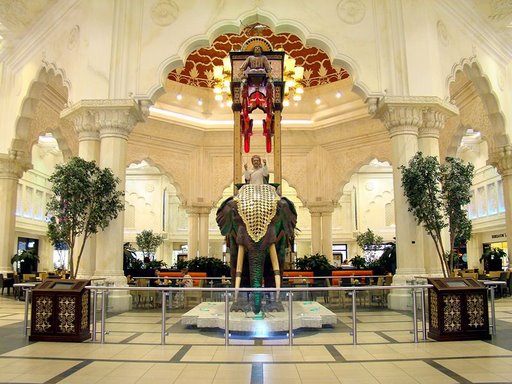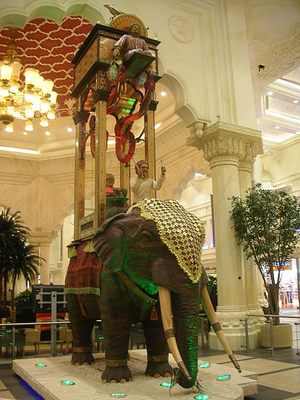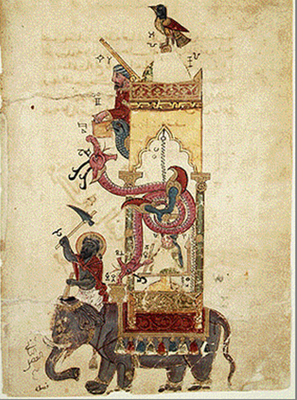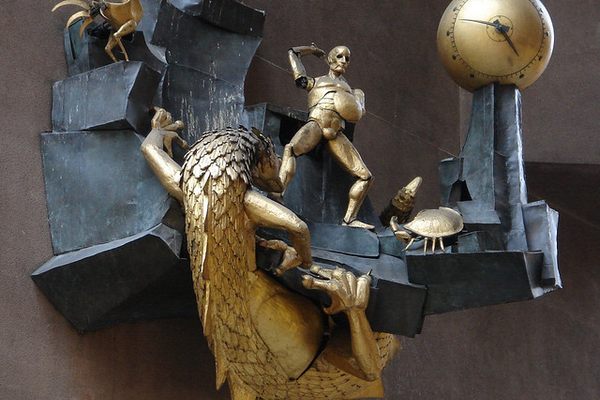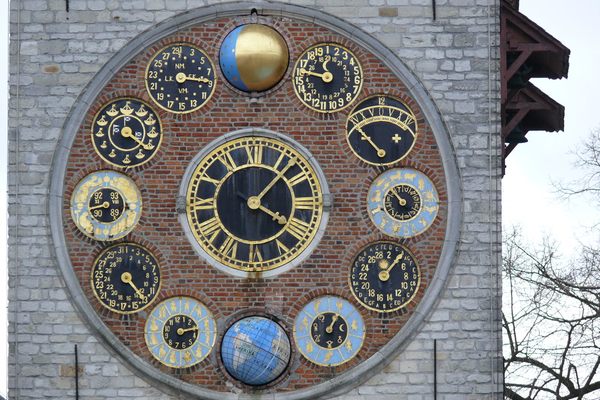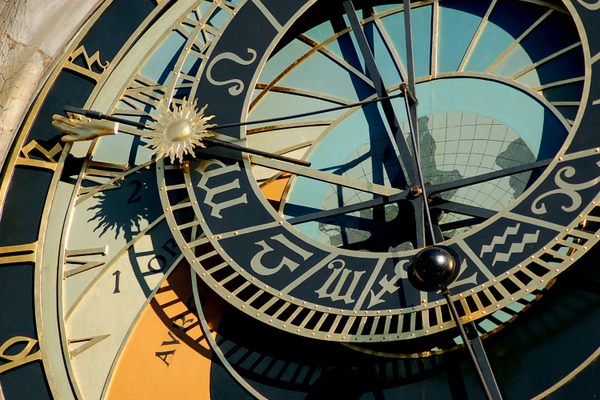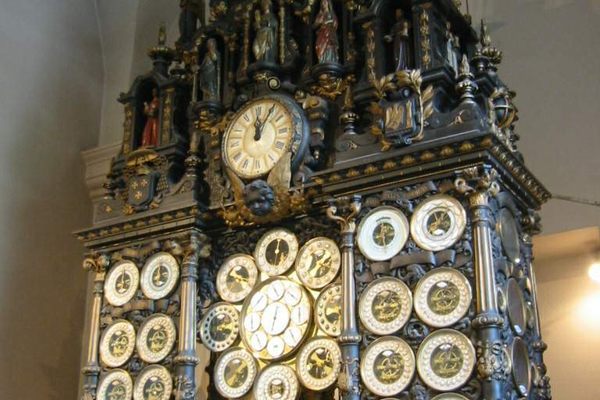About
Built over five months to exacting diagrams in an original 13th century manuscript, the elaborate elephant-shaped water clock at the Ibn Battuta mall in Dubai is a tribute to 800 year old engineering brilliance.
The Elephant clock was only one of many ingenious devices designed by the polymath inventor Al-Jazari (full name: Badi Al-Zaman Abu Al-Izz Ismail Bin Al-Razzaz Al-Jazari), who worked as chief engineer for the Artuklu Palace, now in Turkey, in the middle-ages. In his famous manuscript, known in English as the Book of Knowledge of Ingenious Mechanical Devices, published in 1206, Al-Jazari described in detail 50 machines of varying complexity, illustrated with beautiful color miniatures. His work and book are different from a lot or early treatises on mechanical contraptions in that he was a gifted mechanic, and the book is more of a practical guide than merely a theoretical book of engineering concepts. His instructions included devices like automatic gates and doors, animal and humanoid automata, and clocks. It was the clocks for which he would become most famous. These were more than just mechanical toys. The complexity of his 11 foot Castle astronomical clock is so complex, it is considered to be an example of an early programmable analog computer.
Timekeeping had special role in the Muslim faith, allowing followers to more accurately know the five times for prayer in the absence of a call to prayer. In Al-Jazari's time, the Islamic empire had reached new heights, covering most of North Africa, Europe, and Asia. The technology of simple water clocks dates back to Babylonia, Ancient Egypt, and Greece, and less complicated examples of water clocks were used throughout the Muslim world to help keep time.
The Elephant clock is different from these, both in its elaborate form and function. The physical details of his clock represent different cultures: The elephant is an Asian elephant which represents India, the dragon-like serpent represents China, the phoenix at the top represents ancient Egypt, and the turbaned figure represents Muslim cultures. The internal mechanisms of the clock, driven by floats in water tanks hidden in the belly of the elephant, activate the various components into mechanical motion every half hour.
The 3.5 million square foot mall, in which the elephant clock can be found is named for the 14th century explorer Ibn Battuta. The mall is divided into themed sections, each taking visual inspiration from various lands visited by Battuta. The Elephant clock is located in the India Court portion.
The full-size working reproduction was commissioned for the 2005 opening of the mall, and carried out by the U.K.-based Foundation for Science, Technology and Civilization (FSTC), who consulted on the design of the decor. The FSTC is dedicated to disseminating information about Muslim history and culture. According to mall publications, there are plans to re-create his famous Castle Clock as well.
There are at least three other examples of reconstructions of the Elephant Clock, including one outside the Musee d'Horlogerie du Locle, Chateau des Monts, in Le Locle, Switzerland, and one at the Institute for the History of Arab-Islamic Science in Frankfurt, Germany. The newest, 20 foot tall, Elephant clock is on display at the London Science Museum through April 2010 as part of the exhibit 1001 Inventions, dedicated to the history of Muslim science and technology.
Related Tags
Know Before You Go
Ibn Battuta Mall on Sheikh Zayed Road in Dubai close to Interchange 6 for Jebel Ali Village.
Community Contributors
Added By
Published
February 16, 2010
Sources
- Excellent article: http://www.muslimheritageconsulting.com/news/elephant_clock.html
- manuscript: http://www.ebuliz.com/ebuliz22.swf
- http://www.ibnbattutamall.com/
- http://cabinet-of-wonders.blogspot.com/2008/08/clockwork-in-cold.html
- http://www.muslimheritage.com/day_life/default.cfm?ArticleID=188&Oldpage=1
- http://muslimheritage.com/topics/default.cfm?ArticleID=851
- http://www.history-science-technology.com/Articles/articles%206.htm
- http://www.muslimheritage.com/topics/default.cfm?ArticleID=1182
- http://www.saudiaramcoworld.com/issue/200703/the.third.dimension.htm
